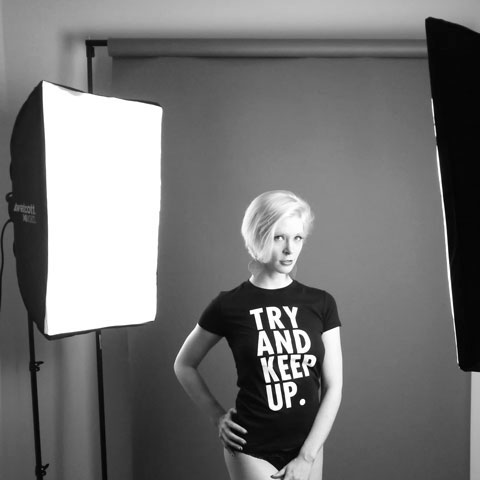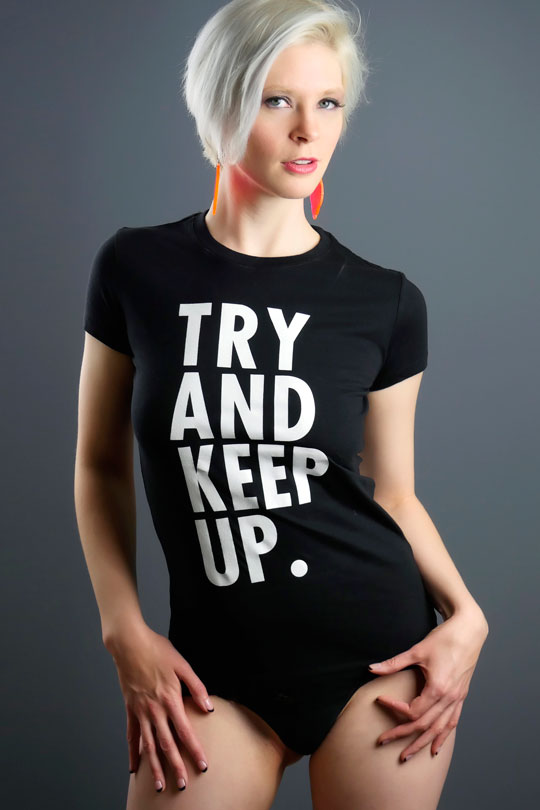Today’s Post by Joe Farace
 The problem with traditional “hot lights” is that they are, well, hot and are not all that comfortable to work under for subject and photographer alike. Welcome to a world of continuous light sources that are powered by fluorescent bulbs. I know what you’re thinking, don’t fluorescent lights produce horrible green light?
The problem with traditional “hot lights” is that they are, well, hot and are not all that comfortable to work under for subject and photographer alike. Welcome to a world of continuous light sources that are powered by fluorescent bulbs. I know what you’re thinking, don’t fluorescent lights produce horrible green light?
As it turns out daylight-balanced fluorescents are the perfect light source for digital photography. By comparison, tungsten lights produce 93% heat and only 7%, mostly red light. Fluorescent bulbs are cooler, brighter, and comes out the winner for color balance. The RGB output from daylight-balanced fluorescent-based lights for photography closely matches the receptive RGB spikes of most camera’s imaging chips. A digital camera’s sensor is least sensitive in its blue channel and tungsten light has the least output in the blue and when combined with infrared (heat) output it can overcome a chip’s spectral response.
 Westcott’s Two-Light Daylight D5 Softbox kit includes two D5 light heads, two 24×32-inch Basic softboxes, ten 27 Watt daylight balanced fluorescent lamps and two 6.5 ft lightstands.
Westcott’s Two-Light Daylight D5 Softbox kit includes two D5 light heads, two 24×32-inch Basic softboxes, ten 27 Watt daylight balanced fluorescent lamps and two 6.5 ft lightstands.
The softboxes have a silver reflective lining to maximize output with heat resistant rods that mount on receptacles on the D5’s head. The kit comes in a 10x12x29-inch box that since it has a handle can double as a carrying case. Feel free to replace it with something more durable.
How I made this shot: For this catalog-style shot of Pam Simpson wearing a TAKU tee shirt, one of the D5 heads with 24×32-inch softbox attached was placed at camera right with only three lamps turned on. The second light was at camera left and slightly behind the subject, with all five bubs illuminated. Backdrop was a 5×7-foot Photo Grey Savage Infinity vinyl background. The image of Pam was shot with a Panasonic Lumix GH4 with 45mm f/2.8 Leica DG Macro-Elmarit lens and even with the main light using only three of the daylight fluorescent bulbs exposure was 1/80 sec at f/4 and ISO 640.
Be aware: Because fluorescent lamps contain mercury, they are classified as hazardous waste. The Environmental Protection Agency recommends FLD lamps be segregated from general waste for recycling or safe disposal. Home Depot in my area has a recycling area for these kinds of bulbs and I’m sure there are others at similar stores.
If you enjoyed today’s post and would like to see more portraits of models such as Pam Simpson, perhaps you can help by making a contribution via Patreon, where memberships start at just $2.50, with additional levels of support at $5 and $10 that includes special benefits. And if you do, I would like to thank you for your support